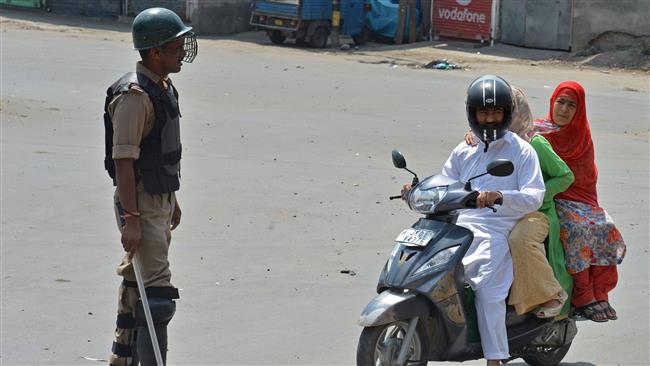Alwaght- Indian government for the 28th day has extended curfew in several parts of Kashmir in a bid to prevent more pro-independence protests across the disputed Himalayan region that has killed over 50 and injured over 4,000.
The authorities have ordered strict restrictions on the movement of residents across the Muslim-majority region.
A large number of paramilitary troops patrolled the deserted streets of many towns across the region, including the city of Srinagar, the summer capital of Jammu and Kashmir.
Almost all businesses and institution remained closed and traffic stayed off the streets in Srinagar and other major towns across the disputed valley.
Meanwhile, pro-independence leaders have urged Kashmiris to defy the curfew by marching to the Hazratbal shrine in Srinagar and stage anti-India protests after Friday prayers.
Large parts of the Indian-controlled Kashmir have been under a 24-hour curfew in recent weeks.
Kashmir is a region located in northwest of the Indian Subcontinent. It is comprised of Indian-administered Jammu and Kashmir State, Gilgit-Baltistan state, as well as Pakistani-administered Azad Kashmir and the Chinese-administered Aksai Chin. The region majorly is mountainous, and the Karakoram mountain range contains K2 Mountain, the second-highest mountain on the earth and a couple of other very high mountains.
Kashmir is also considered as one of key areas of influence of Farsi language, as Iqbal Lahori, the prominent Pakistani poet and politician called Kashmir the “smaller Iran.” The region was later recognized by this name and the people in the region now use the name for Kashmir. The region from north and east meets China, from south meets India, from west shares borders with Pakistan, and from northwest shares borders with Afghanistan. The Indian state of Jammu and Kashmir is a 101,437 square kilometers area, and it has a population of over 12 million, according to a 2011 official census.



























